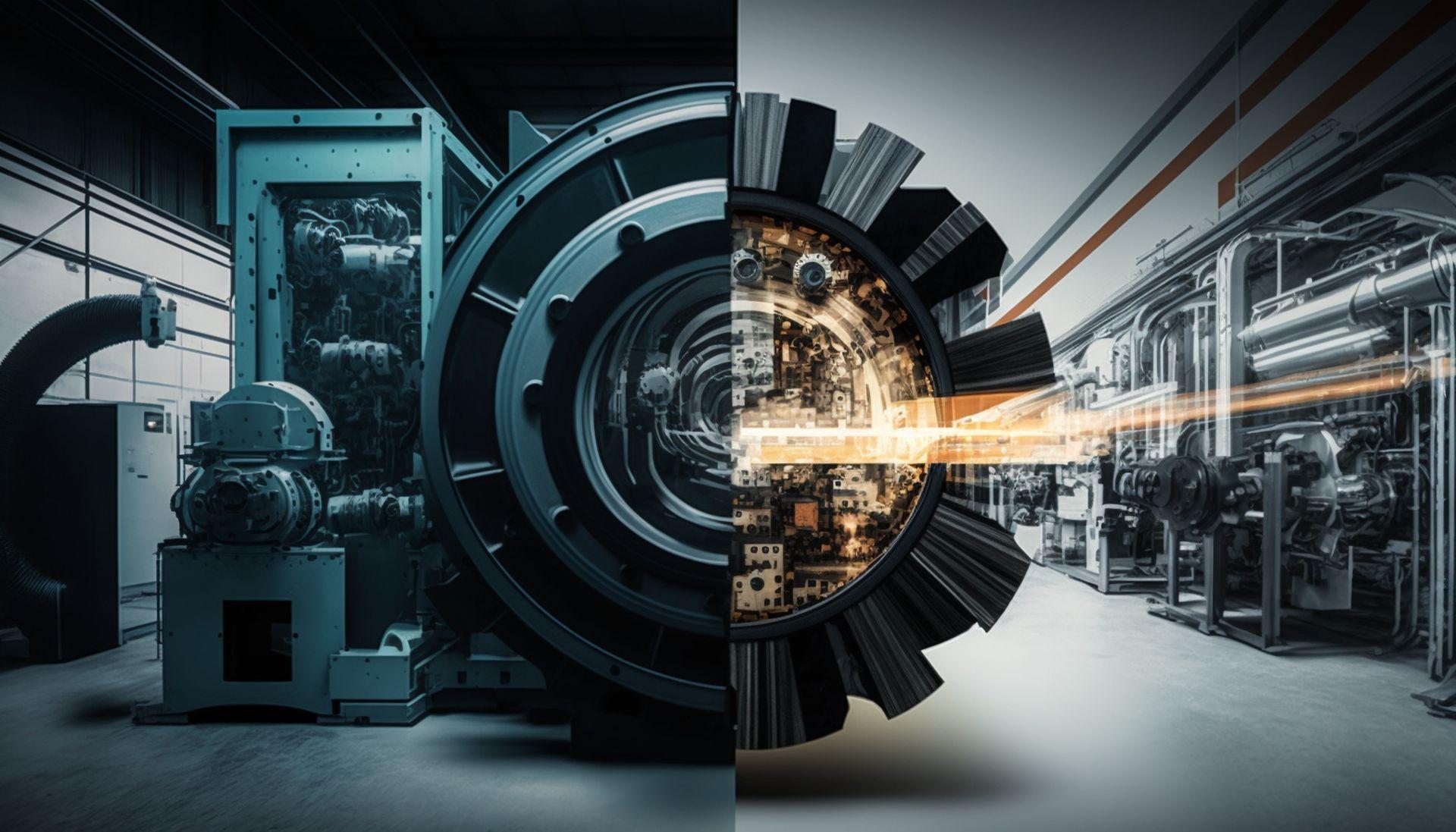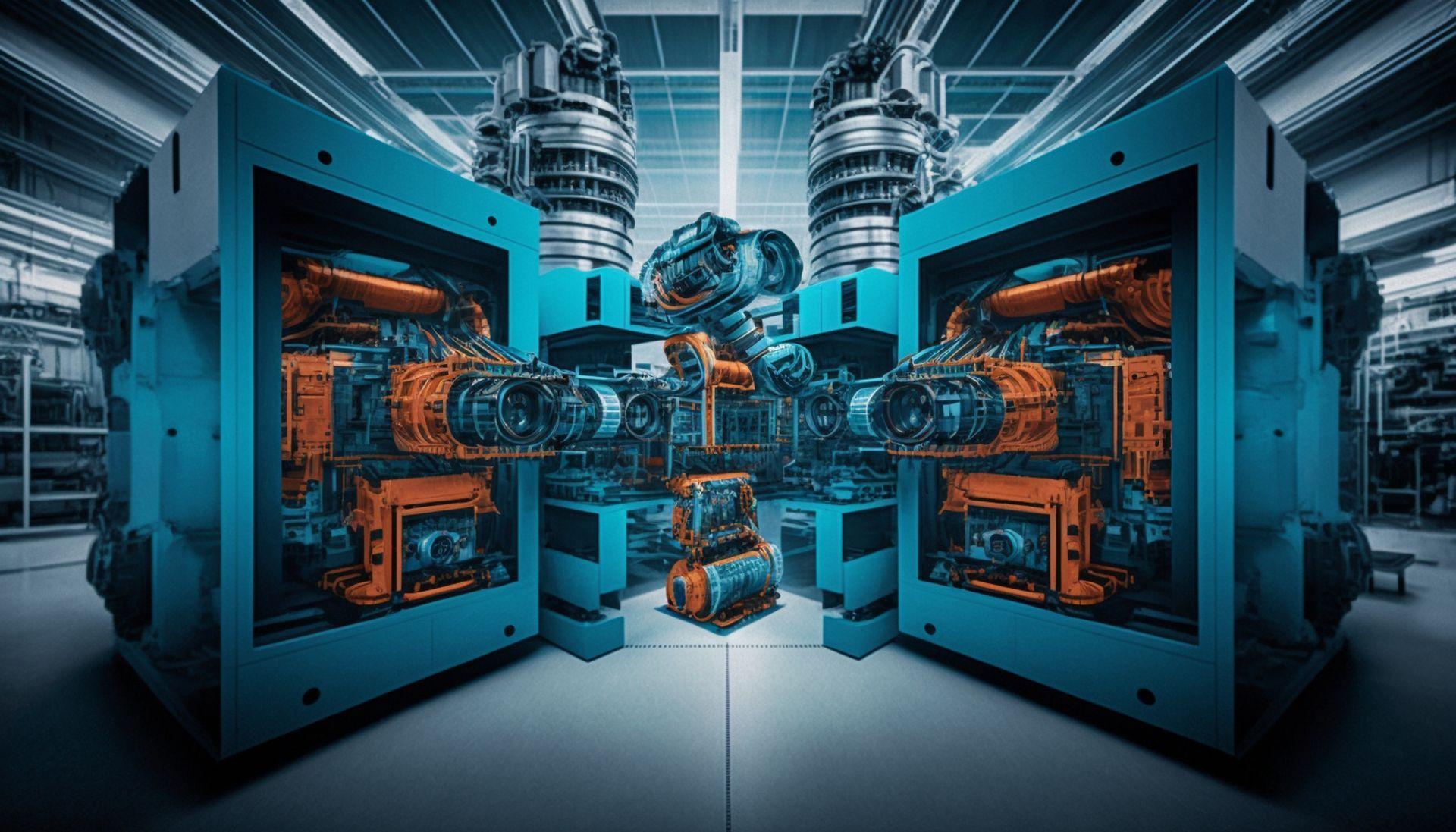The digital transformation in manufacturing represents a significant opportunity to improve operational efficiency, reduce costs, and enhance the customer experience. The manufacturing industry is undergoing a profound transformation driven by rapid advances in technology and the growing demand for more efficient, sustainable, and data-driven operations. This transformation often referred to as Industry 4.0, marks the beginning of a new era of digitalization, data-driven decision-making, and smart automation. The adoption of Industry 4.0 technologies and practices is critical for manufacturers looking to remain competitive in a rapidly changing business environment.
In an era where data is becoming the new currency, manufacturers that can leverage data and analytics to drive innovation and improve their operations will be the ones that succeed. The digital transformation of manufacturing also presents a critical solution for addressing the global challenges posed by climate change, as it enables the creation of more sustainable and environmentally friendly production processes.
The importance of digital transformation in manufacturing
Manufacturing has long been a vital part of the global economy, and the industry has come a long way in recent decades. However, with the advent of new technologies and the increasing demand for customization and efficiency, the manufacturing sector is undergoing a significant transformation. Digital transformation is at the forefront of this change, offering manufacturers a wealth of opportunities to improve their operations, meet the demands of customers, and remain competitive in a rapidly evolving market.
A brief overview of the current state of manufacturing and the benefits of digital transformation
The current state of manufacturing is characterized by a growing need for customization and personalization, as well as increased pressure to reduce costs, improve quality, and speed up delivery times. To meet these demands, manufacturers are turning to digital solutions to streamline their operations, increase efficiency, and gather valuable data and insights. From Industry 4.0 technologies and practices to investments in data and analytics infrastructure to the adoption of smart automation and connected systems, digital transformation is enabling manufacturers to stay ahead of the curve and thrive in today’s fast-paced, global market.
The benefits of digital transformation in manufacturing are numerous and wide-ranging. By adopting digital solutions, manufacturers can improve their operations in a number of ways, including increased efficiency and productivity, reduced costs, improved quality control, and enhanced customer experience. Additionally, digital transformation can provide manufacturers with valuable insights into their operations, enabling them to make data-driven decisions, optimize their processes, and stay ahead of the competition.
The drivers of digital transformation in manufacturing
The manufacturing industry is undergoing a significant transformation, driven by a number of factors, including technological advancements and increased competition. These drivers are driving manufacturers to embrace digital solutions and transform their operations in order to remain competitive in the rapidly evolving market.

The role of technology advancements and increased competition
The role of technological advancements in digital transformation in manufacturing cannot be overstated. Advances in areas such as the Internet of Things (IoT), artificial intelligence (AI), and cloud computing have enabled manufacturers to collect and analyze vast amounts of data, automate processes, and streamline operations. This has allowed manufacturers to become more efficient, reduce costs, and improve the quality of their products and services.
Increased competition is another key driver of digital transformation in manufacturing. With the rise of global competition, manufacturers are facing increased pressure to improve their operations and offer unique and innovative products and services. By embracing digital solutions, manufacturers can not only stay ahead of the competition but also differentiate themselves in the market and better meet the demands of their customers.
Fostering a culture of innovation through digital maturity
The impact of changing customer demands and market trends
Changing customer demands and market trends are also driving the need for digital transformation in manufacturing. Consumers are increasingly demanding customized and personalized products and services and are expecting faster delivery times and improved quality. Manufacturers must respond to these demands by embracing digital solutions that allow them to streamline their operations, improve efficiency, and meet the needs of their customers.
The key components of a successful digital transformation in manufacturing
The manufacturing industry has undergone a significant transformation in recent years, with the rise of Industry 4.0 and the increasing adoption of digital technologies. The successful implementation of a digital transformation in manufacturing requires a combination of the right technology, a supportive culture, and a focus on data and analytics.
Adoption of Industry 4.0 technologies and practices
Industry 4.0 refers to the fourth industrial revolution, characterized by the integration of advanced technologies such as the Internet of Things (IoT), artificial intelligence (AI), and robotics into the manufacturing process. The adoption of these technologies is a key component of a successful digital transformation in manufacturing. By implementing these technologies, manufacturers can improve efficiency, reduce costs, and enhance the overall quality of their products.
Investment in data and analytics infrastructure
Data is at the heart of a successful digital transformation in manufacturing. Investing in a robust data and analytics infrastructure is critical for manufacturers looking to take advantage of the opportunities presented by Industry 4.0. This infrastructure should include the collection, storage, and analysis of data from a variety of sources, including IoT-connected devices, machines, and production lines. The insights generated from this data can help manufacturers make informed decisions, improve their processes, and stay ahead of the competition.
Building a digital-first culture and mindset
A digital-first culture and mindset are essential for the successful implementation of a digital transformation in manufacturing. This means that manufacturers need to adopt a customer-centric approach and embrace the change brought about by digital technologies. Companies must empower their employees with the right tools, training, and support to fully leverage these technologies and cultivate a culture that values innovation and continuous improvement.
Implementation of smart automation and connected systems
Smart automation and connected systems play a crucial role in the digital transformation of manufacturing. By automating repetitive tasks and connecting systems and devices, manufacturers can reduce the risk of human error and improve the overall efficiency of their operations. Additionally, the data generated by these connected systems can provide valuable insights into the production process, allowing manufacturers to identify areas for improvement and optimize their operations.
Developing a digital transformation roadmap for manufacturing
A digital transformation roadmap is a strategic plan that outlines the steps a company must take to achieve its digital transformation goals. In the context of manufacturing, a digital transformation roadmap can help companies embrace new technologies, modernize their operations, and stay ahead of the competition. In this section, we’ll discuss the key components of a successful digital transformation roadmap for manufacturing.
Step 1: Assessing current state and defining goals
The first step in developing a digital transformation roadmap is to assess the current state of the company and define clear, measurable goals for the transformation. This should include an analysis of the company’s technology and data infrastructure, processes, and culture. The goals should be aligned with the company’s overall business strategy and should take into account both short-term and long-term needs.
Step 2: Identifying priorities and developing a plan
Once the current state and goals have been defined, the next step is to identify the priorities for the transformation. This should be done in consultation with key stakeholders and should take into account the resources available, the timeline for the transformation, and the potential impact on the business.
Based on the priorities, a detailed plan for the transformation should be developed. This plan should include specific actions and timelines for implementation, as well as a clear understanding of the resources required and the roles and responsibilities of the various stakeholders.
Step 3: Implementing and monitoring progress
The implementation phase is where the plan for the digital transformation is put into action. This will likely involve a significant amount of change management as employees and processes are adapted to the new technologies and approaches. It is important to communicate the benefits of the transformation clearly and effectively and to provide support and training as needed.
Finally, progress should be regularly monitored and evaluated, and the roadmap should be adjusted as necessary. This will help ensure that the transformation remains on track and that the goals are achieved.

Case studies of digital transformation in manufacturing
The successful implementation of a digital transformation in manufacturing can have a profound impact on a company’s operations, competitiveness, and bottom line. In this section, we’ll take a closer look at some real-world examples of digital transformation in the manufacturing industry.
Digital transformation examples in manufacturing
One prominent example of digital transformation in manufacturing is the automotive industry. Automakers have invested heavily in Industry 4.0 technologies and data-driven processes, leading to significant improvements in efficiency and productivity. Another example is the aerospace industry, where digital technologies have been leveraged to improve supply chain management, streamline the design process, and reduce the time it takes to bring a new product to market.
Transforming your business with data observability in the era of digitization
Discussion of the key elements that led to their successful transformations
The successful transformations in the automotive and aerospace industries were driven by a number of key elements, including investment in advanced technologies, the adoption of data-driven processes, and a focus on building a digital-first culture. In each case, the companies were able to leverage digital technologies to improve their operations, reduce costs, and stay ahead of the competition. The key to their success was a combination of technology, process, and culture, working in harmony to deliver tangible results.
Challenges and best practices for digital transformation in manufacturing
While digital transformation in manufacturing offers many benefits, it is not without its challenges. In this section, we’ll discuss some of the common obstacles manufacturers face when undergoing a digital transformation and provide best practices for overcoming them.
Common obstacles and how to overcome them
One of the biggest challenges in digital transformation in manufacturing is resistance to change. Many employees may be skeptical of new technologies and processes and may be unwilling to adopt them. To overcome this challenge, manufacturers need to provide their employees with training and support and communicate the benefits of the transformation clearly and effectively.
Another challenge is a lack of investment in technology and data infrastructure. Manufacturers must invest in the right technology and data infrastructure if they want to reap the benefits of digital transformation. This includes not only the technology itself but also the personnel and resources needed to manage it effectively.
Benefits of digital transformation in manufacturing
The benefits of digital transformation in manufacturing are many and varied. By adopting Industry 4.0 technologies and data-driven processes, manufacturers can improve efficiency, reduce costs, enhance the quality of their products, and better meet the needs of their customers. Additionally, digital transformation can help manufacturers stay ahead of the competition and remain relevant in an increasingly digital world.
Strategies for ensuring long-term success
To ensure long-term success, manufacturers must develop a clear and comprehensive digital transformation strategy. This strategy should be built around the specific needs and goals of the company and should take into account the technology, process, and culture elements discussed earlier. Manufacturers should also be prepared to continually evaluate and adjust their strategy as needed in response to changing market conditions and technology trends.
Another important factor in long-term success is the development of a strong data and analytics culture. Manufacturers should encourage the collection and analysis of data from all aspects of their operations and should use these insights to drive continuous improvement. Finally, manufacturers should foster a culture of innovation and continuous learning, empowering their employees to take advantage of new technologies and processes as they emerge.

The future of digital transformation in manufacturing
The manufacturing industry is undergoing a rapid transformation driven by digital technologies, and the pace of change is only expected to accelerate in the coming years. In this section, we’ll examine some of the emerging technologies and trends shaping the future of digital transformation in manufacturing and discuss how manufacturers can prepare for what’s to come.
Discussion of emerging technologies and trends
One of the key trends shaping the future of digital transformation in manufacturing is the increasing use of artificial intelligence (AI) and machine learning (ML). These technologies have the potential to revolutionize the way manufacturers approach operations by enabling them to make better use of data, automate repetitive tasks, and optimize decision-making.
Another important trend is the growing adoption of the Internet of Things (IoT) in manufacturing. The IoT refers to the network of connected devices that can communicate and share data with one another and has the potential to create more efficient, interconnected, and responsive manufacturing operations.
AI and big data are the driving forces behind Industry 4.0
Predictions for the future of the industry and how manufacturers can prepare
In the years to come, it is likely that the use of AI, ML, and IoT will become increasingly widespread in the manufacturing industry. Manufacturers that embrace these technologies and incorporate them into their operations will be well-positioned to stay ahead of the competition and continue to grow.
To prepare for the future, manufacturers must invest in the development of their data and analytics capabilities and actively seek out new technologies and best practices. They should also be proactive in developing their human capital by providing their employees with the skills and training they need to succeed in a rapidly evolving digital landscape.
Conclusion
In conclusion, the digital transformation of manufacturing is an essential step for companies looking to remain competitive in the rapidly changing business landscape. By embracing Industry 4.0 technologies and practices, manufacturers can improve their operations, reduce costs, enhance the customer experience, and address the global challenges posed by climate change. The future of manufacturing is digital, and manufacturers that can effectively navigate the transformation will be the ones that thrive. The digital transformation of manufacturing represents a significant opportunity for growth and innovation, and those companies that embrace it will be well-positioned to succeed in the era of data and digitization.






